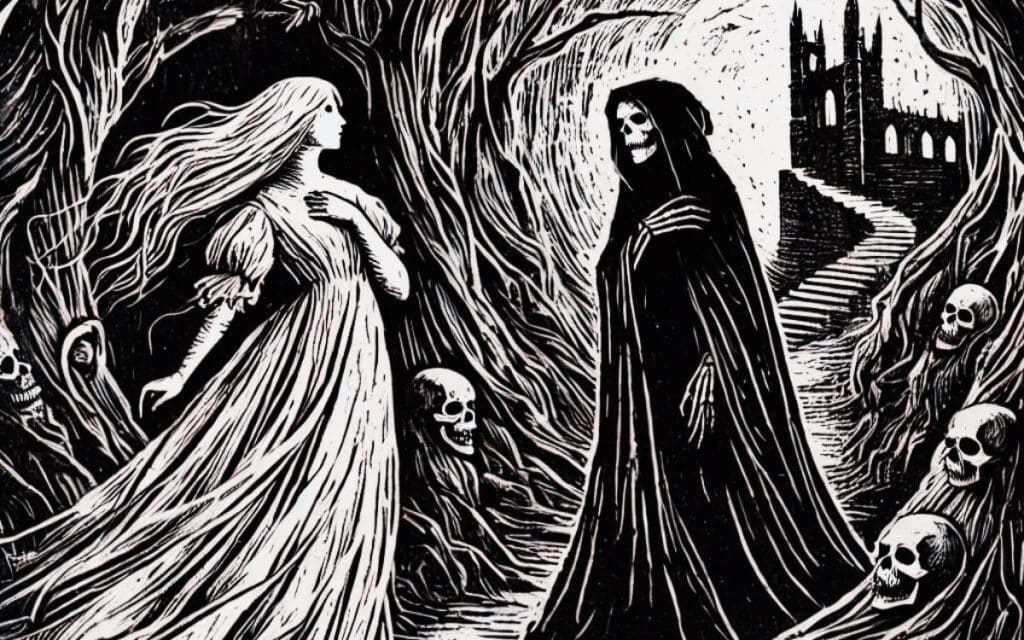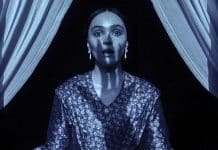Samuel Taylor Coleridge’s unfinished Gothic poem Christabel explores themes of innocence, supernatural horror and seduction, leaving readers with an eerie tale of a vampire’s growing influence, writes WILLIAM BOVE

Christabel by Samuel Taylor Coleridge
Samuel Taylor Coleridge’s Christabel is a haunting blend of Gothic horror and Romanticism. Originally intended as a three-part poem, only two parts were completed, leaving the story unfinished. Coleridge never completed it, as personal tragedies and creative struggles drained his desire to continue.
The poem did not leave him uninspired or disgusted by its creation. However, the toll it took on him left him as drained as his antagonist, Geraldine, the vampire. It is suggested that fellow poets, William Wordsworth included, borrowed ideas from Coleridge, sometimes even claiming them as their own. Although Wordsworth remained a long-time friend, he did not plagiarise Coleridge’s work. Instead, he supported him throughout his life. Unfortunately, their friendship ended due to Coleridge’s growing selfishness and severe struggles with mental health, including deep depression and anxiety, which may have been symptoms of bipolar disorder.
The first part of Christabel was written in 1797, while the second was completed in 1800. The final part never materialised. The poem opens with an eerie sense of whimsy that deepens as the story unfolds, weaving character, theme, and mood together with rich Gothic imagery.
The scene is set in a dark forest surrounding a castle at midnight. Christabel, a young and virtuous girl, ventures into the woods to pray for the one she loves. The night is filled with unsettling sounds – howling dogs, a chiming clock, and a crowing cock – all traditional omens of impending danger. These eerie elements build suspense, foreshadowing the threat that lurks in the shadows.
In the forest, Christabel encounters Geraldine, a pale and weary woman claiming she has been abandoned by men who will soon return for her. Moved by compassion, Christabel brings Geraldine back to the castle. However, strange signs hint at Geraldine’s true nature. She recoils from the castle’s iron gates and grows uneasy in the presence of stone angels – both symbols of divine protection.
These reactions, rooted in folklore, suggest that Geraldine is no ordinary woman but a vampire. The poem’s romanticism draws readers into this dark, mysterious world, where an unnamed danger looms ever closer to Christabel.
Once inside the castle, Geraldine grows weaker. Christabel offers her a place to rest, leading to an implied seduction. However, Geraldine does not use traditional allure but rather comfort and protection. She presses Christabel to her bosom, her touch imbued with a spell-like power. The influence of magic is unmistakable – Geraldine’s presence leaves Christabel weakened and entranced.
This scene further supports the theory that Geraldine is a vampire. Folklore often attributes vampires with the ability to charm and hypnotise their victims, whether through direct gaze or an illusion of vulnerability. Christabel is deeply affected, suggesting she has fallen under Geraldine’s supernatural control.
As the poem progresses, Christabel has a vision of an aged, corpse-like bosom – another indication of Geraldine’s undead nature. The spell momentarily breaks, but Christabel remains too ensnared by Geraldine’s influence to resist.
At one point, Geraldine’s true form is partially revealed. Her eyes resemble those of a serpent, and something gleams unnaturally upon her. These details solidify her as an inhuman, malevolent force. Her aversion to iron and religious imagery, along with her lifeless, cold body, reinforce the idea that she is a creature of the undead. Her presence leaves both Christabel and her father in a weakened state, further suggesting a vampire’s ability to dominate the living.
Yet, the poem’s conclusion remains unwritten. We will never know Christabel’s fate, nor that of her father or Geraldine. Christabel, sensing Geraldine’s growing evil, tries to warn her father, but she is too drained to make him listen. He, too, falls under Geraldine’s spell, ignoring his daughter’s desperate pleas. This final moment implies that the vampire’s control extends beyond innocence – it ensnares all who cross her path.
Fun fact: Samuel Taylor Coleridge is considered a key figure in the Romantic literary movement for his masterful use of language, symbolism, and exploration of the supernatural in poetry.
What do you think of Coleridge’s unfinished poem Christabel? Do you believe Geraldine was a vampire, or do you interpret her differently? Share your thoughts below!







